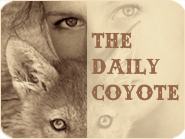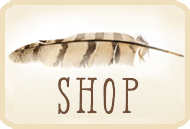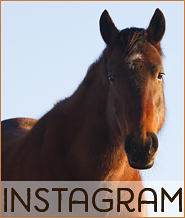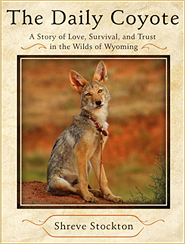The Long and Winding and Beautiful and Tragic Story of 3M ~ Part I
☆ May 22, 2018
Roxy, Daisy’s youngest daughter (not counting Mara), had her first calf this Spring. In the week leading up to Roxy calving, I had been watching her like a hawk. Since she is Daisy’s daughter and half her genetics are dairy cow, it’s harder to tell when she’s getting close to calving by looking at her udder. When an Angus cow’s udder fills out and loses all wrinkles, calving is nigh. But with Roxy, her udder looked full and ready and then it kept on growing. So I checked on her constantly. We always keep an extra close eye on heifers because they tend to need more help during or immediately after calving than older cows; it’s their first time, after all. And I tend to keep an extra close eye on all my cows whenever I can, because birth is a big deal, the culmination of months of growth and care, and birth can be life or death. One little thing or big thing goes wrong, and it all ends before it can begin.
Two days before she calved, I put Roxy in the barn so I could check on her more easily, especially at night. It was days away from a new moon, and finding her at midnight or 3am took luck and wandering the hills and flats of the property with the weak light of a flashlight, searching for where she was sleeping. When it’s as dark as it is without moonlight, you have to stumble right on to a cow to see her. I had more success finding clusters of sleeping cows by sound rather than sight, listening for their collective deep breaths in the dark, huffs of sighs, their great exhales. Once I found a group, I had to shine my light on every body to find Roxy before returning to bed. Cows in labor prefer to go off by themselves and find a secluded place to have their calf, and this is why I finally put Roxy in the barn. Searching for her in the dark, if she decided to go off alone into a draw or far corner to have her baby in the night, would have been nearly impossible.
This year, I have put off going into town until it is absolutely unavoidable. There’s just been too much going on at home to take care of, and town is thirty miles away, and errands are never something I look forward to, even in the mellowest of times. I’ve been averaging one trip every three or four weeks, and by mid-April, it had reached the point where I simply had to run to town. I coordinated with Mike. I would check on Roxy mid-morning, then go to town for a few hours. He would be home by noon to feed cows and would check on her then. I would be home soon after to resume my post of obsessively watching her. I got home around 1:30pm and went straight into the house with groceries, and as Mike and I were chatting, I went out on the deck with binoculars to peek at Roxy in the barn. I could barely see her, but something about her posture sent off every alarm in my head. “I think she’s calving,” I said as I ran past Mike and dashed out to the barn. Mike was right behind me. When we got to the barn, we saw she was in labor, and her calf’s hooves were already out, and her calf was breech.
You can tell if a calf is breech or not by the hooves when they emerge. When a calf is in the ideal position, the shiny black part of their hooves is facing up. These are the front hooves, and the calf is positioned like it is diving out of its mother – front legs, then face, then the rest of its body. When a calf is breech, the soft white undersides of its hooves are facing up. The calf is in the same ‘diving’ position, but backwards – the hind legs come out first, and you are looking at the soles of its back hooves. We saw the white bottoms of the hooves and Mike went straight into denial. “Maybe it’s just twisted around and looks backwards,” he said. Since Roxy is tame and trusts me, I walked up to her, pet her back, and reached my hand inside her, following the leg of her calf. “I feel the hock,” I said to Mike. The hock is the pointy joint on the hind legs of cows (and cats and horses and many other four legged animals) that does not exist on the front legs. “I’ll call the vet,” I said, and we ran back to the house. The vet’s receptionist said he was in the field and wouldn’t be available till 5pm. Babies don’t wait, and this one was coming now, and Mike and I had no choice but to deliver it.
The reason delivering breech births is so stressful is because if you do it wrong, the baby will die. When a baby is delivered, a pressure change occurs when the thorax emerges, and this is what compels the baby to take its first breath. (Tangent – this is so bizarre to observe in non-breech births, when the calf’s front legs and face and entire head are out of the cow, and its eyes may be open, and sometimes it hangs out like this for a while if the cow needs to rest, and it’s not breathing!) So, if the thorax is delivered before the baby’s head, as is the case with breech births, this biological demand to breathe will still take place, and the calf will take its enormous first breath at that moment. And if the calf’s head is still inside its mother, it will not be able to breathe air and it will drown or suffocate – in either case, it will die.
What makes breech births in cows so hard to deliver successfully is that the two main ‘hang ups’ during delivery are the calf’s hips and shoulders. These are the widest parts of the calf, by a significant margin. Depending on the size of the calf and the experience of the cow, she may need time to push these parts out. This is why I’ve seen the strange scenario I described above so many times – a calf with its front legs and head out for several minutes before the cow delivers the shoulders and the rest. With a breech, there can be no waiting. Once the hips are out, the torso slithers out quickly because it is so much narrower, and the person delivering the calf must get the shoulders and the rest of the calf out immediately or the calf will start breathing while its head is still inside the cow and it will die. Breech births require human assistance because the cow just can’t do this fast enough on her own for the baby to survive.
And it was up to Mike and me. We got the chain and the calf puller, which is a huge T-shaped bar that fits against the hind legs of the cow, with notches in the long part of the T and a ratchet handle. I grabbed leather gloves and a towel, because baby calves are incredibly slippery, and we would need something with a little traction if we had to pull by hand. Out in the barn, I put the chain around the calf’s ankles. It’s a rounded chain that fits around their ankles just above the hooves and doesn’t hurt the calf. A chain must be used as the point of contact because the force required to pull a calf in an emergency is so great and calves are so slippery; there’s no other way I’ve heard of to pull one out. We crouched beside Roxy where she lay in the barn and hooked the chain to the calf puller. Then Mike started ratcheting out the calf, slowly, working only when Roxy pushed on her own.
Mike and Roxy delivered the calf’s hips by working together, with me coaching Mike, telling him when to ratchet with Roxy’s contractions and when to stop. And then everything went so fast and so crazy and also felt like eternity. The calf’s hips emerged and the thorax slithered out faster than I thought possible. Mike hit the wall of the barn with the puller bar and didn’t have room to ratchet out the shoulders. We each grabbed a calf leg with both our hands and pulled with all our might, me screaming “we have to get it out NOW!” and somehow, together, we did. I immediately thrust my hand down the calf’s throat and scooped out a handful of jelly-like liquid as the calf blinked and gasped and shook his head.
We did it.
I was nervous for Roxy because it was hard on her and I was nervous for the calf because I wasn’t positive it hadn’t breathed any liquid. I was worried that pneumonia would show up in a few days and that Roxy’s calf would die within a week. But for now, everything was good. We placed the calf right at Roxy’s head so she didn’t have to get up in order to lick him clean, and left them together to rest while we returned to the house to have our delayed-reaction heart attacks.
Roxy’s calf is not 3M. This is just the beginning.
Part II is here.
Comments
23 Responses to “The Long and Winding and Beautiful and Tragic Story of 3M ~ Part I”
Leave a Reply








May 22nd, 2018 @ 7:50 am
WOW! THIS IS SO POIGNANT AND EXCITING. I’M HOPING THE BEST LIFE FOR BOTH OF THEM ! AND FOR YOU!
May 22nd, 2018 @ 8:05 am
OMG, I was on the edge of my seat! I absolutely love your writing, and can’t wait for Part II.
May 22nd, 2018 @ 8:47 am
Shreve, I always feel as if I am right there with you when you tell these stories and it’s taken a little bit for me too to just start to breathing normally. Can’t wait to read the rest but somehow don’t think it’s going to be a happy story.
May 22nd, 2018 @ 8:51 am
P- not to give any spoilers, but it actually is a happy story, overall…
May 22nd, 2018 @ 9:26 am
Oh my.. the stress on Roxy and you and Mike. How lucky for Roxy that she has you and Mike, for without you the calf would surely have died. Can’t wait for part II.
May 22nd, 2018 @ 9:36 am
Omg I’m so tense I’m tearing up! You and Mike are amazing. Thanks for sharing these stories.
May 22nd, 2018 @ 9:36 am
1. You explained that process so thoroughly and completely, I feel like I could go help a girl out myself
2.OMGOMGOMGWEHAVETOWAITFORTHERESTOFTHESTORYTILTHURSDAY?????
May 22nd, 2018 @ 9:51 am
What a nail-biter! Great teamwork! I can’t wait to read part two.
May 22nd, 2018 @ 9:58 am
I watch all the vet shows, and Dr Pol pulls so many calves, could see all the equipment. He just gets on the chain and the puller and pulls, not waiting nicely for her contractions as you do.
May 22nd, 2018 @ 10:38 am
Awesome!
May 22nd, 2018 @ 11:12 am
I’m speechless Shreve…. Been following you for a long time and everything about you never ceases to amaze me. I am very grateful to you for being who you are!
May 22nd, 2018 @ 11:49 am
**Crying** Was so scared to read this 0_0
I’m always in awe of how you have grown into your life and its daily adventures and saving lives!
LOL Sarah!!
May 22nd, 2018 @ 12:16 pm
OMG!!! Too stunned for words. Bless you all!
May 22nd, 2018 @ 1:34 pm
Holy.Crap.
May 22nd, 2018 @ 3:25 pm
Congratulations, you two! You should be proud of yourselves! All the very best for you and your growing “family”. May the calf have good health. Sending good thoughts your way.
May 22nd, 2018 @ 4:19 pm
Your details are amazing, I was right there with you during the whole delivery!
May 23rd, 2018 @ 6:53 am
wow – what a day! so happy the little one is ok – thanks to you and Mike – if you hadn’t been there :( looking forward to the next part and thank you for the teaser of an overall happy story whew. but, as I’ve told a shepherd friend in VT – we gotta have the bad with the good or we’d all run out and try to take care of cows, sheep, etc – and that sure wouldn’t be fair to the animals!
May 23rd, 2018 @ 7:56 am
I swear, sometimes your farm life is like a soap opera.
May 23rd, 2018 @ 10:28 am
Have to comb my hair – it’s been standing on end as I’ve read this post. All of these responses are wonderful.
You are a coyote whisperer, a calf, bull and cow whisperer, a cat-and-dog whisperer, a horse whisperer, a chicken whisperer and a bee charmer. You’ve also become a veterinarian and cow midwife. You’ve built your own house, barn and fence line and served as an EMT. You’ve authored three successful books and ridden a Vespa across the country. What’s next? Wonder if NASA is hiring…
May 23rd, 2018 @ 11:24 am
Amazing account; your gifts as a writer are equal to your photography. You show the realities of rural living so poignantly. And you and Mike are fortunate to have each other in your lives.
May 23rd, 2018 @ 2:59 pm
I need a cup of tea and lie down after this!
May 25th, 2018 @ 7:16 pm
So interesting! Because human babies don’t breathe until their face hits the air, and as long as the umbilical cord is attached a providing oxygen, the baby doesn’t need to breathe.
In the womb, too, the baby lives in liquid for the entire gestation and their lungs are full of fluid so until the placenta no longer supplies oxygen, breathing is no big deal.
June 19th, 2018 @ 1:32 pm
I am almost 80 years young. I love to follow your story, especially about your animals. I truly believe that you are living the most sincere way of life possible. I give you my best wish’s and love to all of you on the ranch.